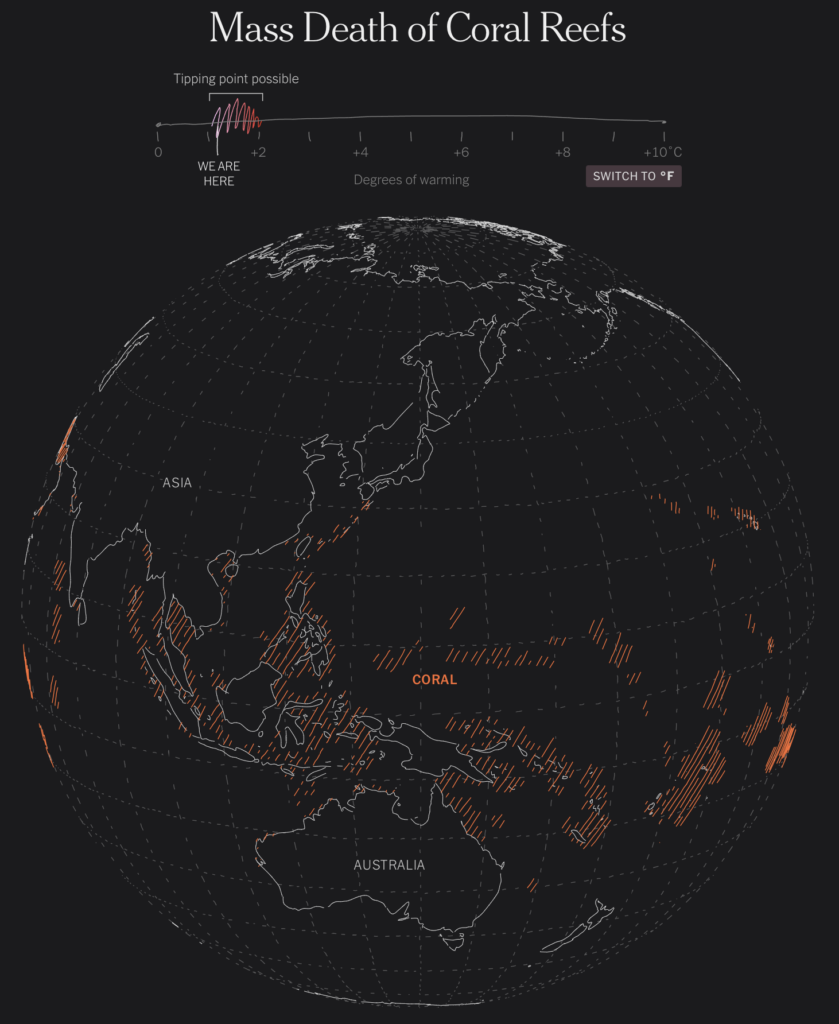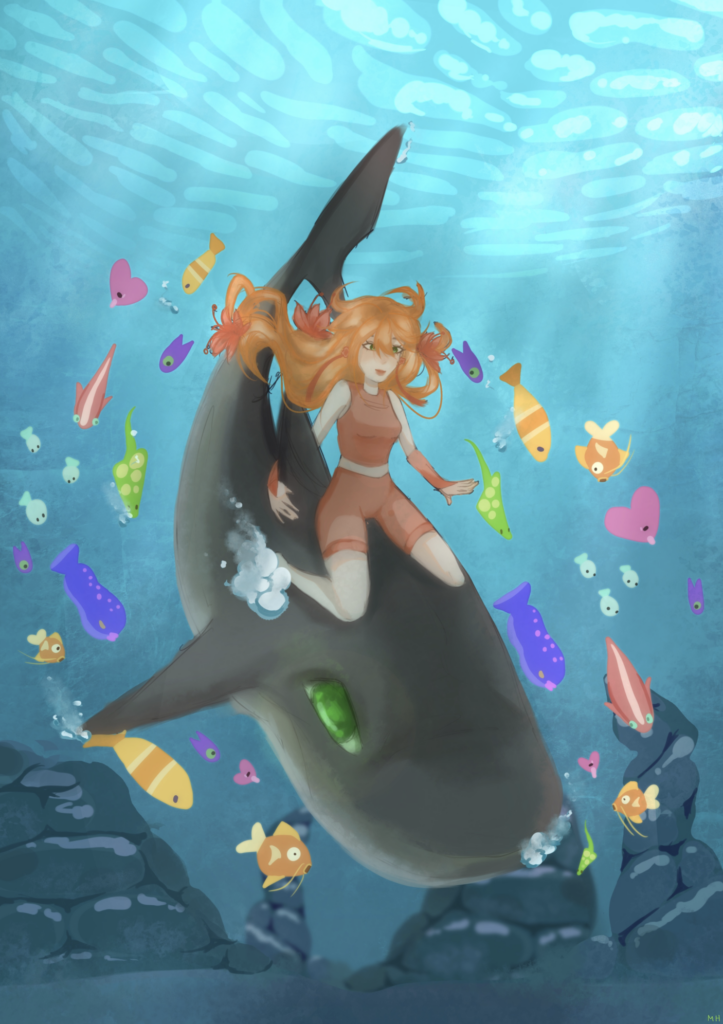Environment: Earth system tipping points threaten our stable environment
September 8, 2024
Dangerous tipping points threaten the stability of several of Earth’s natural climate-controlling systems. Conclusion: warming of 1.5oC is not safe. Possible to protect humans from dangerous animals without killing them. Tanzania accused of apartheid by its own people.
Tips on tipping points
Those who say, ‘Humans have always polluted their environment, there’s nothing new in what’s happening now’, fail to understand that yes, we have always taken from, added to and rearranged the places we inhabit but what we are doing now is not just affecting our local environments. It is also changing the complex natural “Earth systems” that have kept the world’s climate in an unprecedentedly stable equilibrium since the last Ice Age. This is the period, the only period, in which human civilisations have developed.
Up to a point, the complex relationships within and among these natural Earth systems are able to adjust a little to accommodate the strains imposed by greenhouse gases, changing climates, deforestation, pollution of the air, land and water, etc. But ultimately a point is reached where one (or more) of the systems changes so much that it reaches a tipping point beyond which there is no return. Think of a balloon – you can blow air into it, add a bit more and a bit more and then let it down and repeat that process many times and it keeps functioning as a balloon. But put just a little too much air in it and BANG! The balloon doesn’t deflate slowly as before, its whole structure is destroyed, its function is lost, a new equilibrium is reached (bits of rubber all over the floor) and there’s no going back. You can’t ever blow it up again – tears may ensue.
Earth systems behave like that balloon – well, somewhat. There’s unlikely to be a sudden catastrophic collapse of the system, but once the tipping point is passed, changes in the system start to appear, probably slowly and unnoticeably at first, but still inexorably. Once the changes gain momentum, there’s likely to be a period of instability before a new equilibrium emerges, one that is unlikely to be comfortable for humans ( diagram below).

There are several dangers for humans when one of nature’s regulatory systems passes a tipping point:
- The new state of affairs may, through purely natural processes, exacerbate a problem that previously had been caused entirely by human activity. For instance, if the world’s permafrost thaws as temperatures rise, its vast quantities of frozen methane and carbon dioxide will be released into the atmosphere and accelerate global warming. Once this process starts, it will be impossible for humans to control it, even if we wanted to.
- The effects of one system passing a tipping point may precipitate a tipping cascade of other natural systems.
- The current, relatively stable and, for human life and civilisations, safe conditions that we have enjoyed for the last 12,000 years are likely to disappear. Not overnight, but slowly and surely. The best-known potential consequences are “Hothouse Earth”, global warming of not just 2-3oC but 5+oC, and several metres of sea level rise.

The New York Times has briefly described the tipping point, the issue causing the problem, the likely outcomes and the possible timescale of seven Earth systems: mass death of coral reefs, abrupt thawing of permafrost, collapse of the Greenland ice sheets, breakup of West Antarctica’s glaciers, sudden shift in the African monsoon, loss of the Amazon rainforest, and shutdown of the Atlantic Ocean’s currents. The ones identified as most likely to start tipping in the near future are the coral reefs, the permafrost, and the Greenland and West Antarctic ice sheets. In fact, tipping may have already started in some.
Recent attempts to quantify the risk of tipping in four Earth systems (the Atlantic Ocean, Amazon Forest and two polar ice masses) provide very disturbing conclusions:
- Stable long-term global warming of 1.5oC without any prior overshoot, the very best outcome we can probably hope for now, results in a greater than 50% tipping risk – confirmation, if any was needed, that 1.5oC of warming is not a safe target.
- Under current policies to control global warming, there is a 45% chance of a system reaching tipping point by 2300 and 76% in the longer term. The year 2300 seems a long way off, but I suppose that’s what people thought about 2025 in 1850 when all our greenhouse gas problems started.
- The risk of tipping by 2300 increases for every 0.1oC of overshoot above 1.5o
- The two systems most likely to tip soon are the Atlantic Ocean and the Amazon, possibly starting in the next 30-50 years.
- To minimise tipping risk, it is crucial to achieve and maintain net zero greenhouse gas emissions by 2100 at the latest and return global warming to less than 1o.
While the timeframes here seem long, the researchers conclude by emphasising the absolute importance of what we do now: ‘“Our results underscore that stringent emission reductions in the current decade are critical for planetary stability.”
Maasai dispossession: Apartheid Tanzanian-style
The Ngorongoro Conservation Area in Tanzania is famous worldwide – most of us have seen films and television programs about the wildlife and the Indigenous Maasai people. I’m sure that we’d all like to see the area protected from inappropriate development and exploitation. But I suspect that most of us would also like to see the rights and livelihoods of the Maasai protected.
Unfortunately, the 100,000 Maasai in the area are losing their land, their homes and even their democratic rights as the government forcibly, sometimes violently, evicts them from their traditional homelands. Healthcare and education services and the water supply have been cut and the residents have now been removed from the electoral register.

Thousands of Maasai recently blocked the road to the Ngorongoro Conservation Area to air their grievances:
“We are required to move with pass cards in our own land. Like Apartheid SA.
“We are evicted so rich people change our homes into hotels.
“We are experiencing apartheid practices from Tanzanian Government.
“It is sad to witness women suffering of oppression led by a woman president.”
Faith-based groups, human rights and grassroots organisations, international aid and development organisations, researchers and lawyers have formed the Maasai International Solidarity Alliance to support the Maasai and stop the human rights violations.
Protecting humans and other water users
I take it as given that no one wants to be attacked by a shark or a crocodile and that every appropriate action should be taken to avoid such encounters. I also believe that many community members, including those who use the water for business or recreation, do not want animals to be killed unnecessarily, whether they be potential (or even actual) attackers or innocent bystanders such as turtles, dugongs and dolphins.
Consequently, I don’t support the installation of shark nets across popular bays for two reasons: 1) there are better methods of protecting bathers and surfers from the very occasional shark encounter, and, more importantly, 2) the evidence that shark nets work is very weak. In fact, nets may give human water users a false sense of security and harm lots of “non-target” sea creatures along the way. A survey by Kellie Sloane, the state MP for Vaucluse, NSW, a constituency with many ocean and harbour swimming sites, completed by 422 people, demonstrated an almost equal preference for removing and keeping the shark nets.
Michael V, 8 _ Eastern angelshark

Nor do I support the culling of crocodiles either because of claims that their numbers are increasing in a particular area or because of a fatal attack. Such culling can also be distressing to First Nations peoples, particularly if the crocodile is a totem. Again, there are better ways of avoiding encounters.
The Environmental Defenders Office has proposed reforms to the law to minimise the risk of dangerous crocodile-human interactions:
- Create a new offence that outlaws “reckless behaviours” in crocodile habitats, for instance feeding of crocodiles in tourist hot spots.
- Create penalties for people who publish “reckless behaviour” on social media.
- Mandate First Nations peoples’ rights to be consulted before a crocodile is removed.
- Give management and enforcement powers to First Nations Rangers and local governments.
Regardless of the specific circumstances, a fatal encounter with a shark or crocodile is, of course, a great tragedy. However, the priority should be avoiding as many encounters as possible with measures that are justified by good evidence of effectiveness, whether they be measures related to the use of technology or sensible human behaviour.
Fantastical sharks and rays
Australia’s oceans are home to almost a quarter of the world’s species of sharks and rays, many of which are threatened and endangered. Opening on 7 September at Sydney’s Australian Museum, the Fantastical Sharks & Rays exhibition merges education, art, culture and science.
Over 1,500 young people have created artworks, channelling Disney, Matisse, Whitely and more, to celebrate the diversity of sharks and rays and help save them. Ten entries were chosen to be the inspiration for works by ten of Australia’s leading artists.
Monica Hahm, 15 – Greeneye spurdog

Evie Cremen, 6, Lined lanternshark


